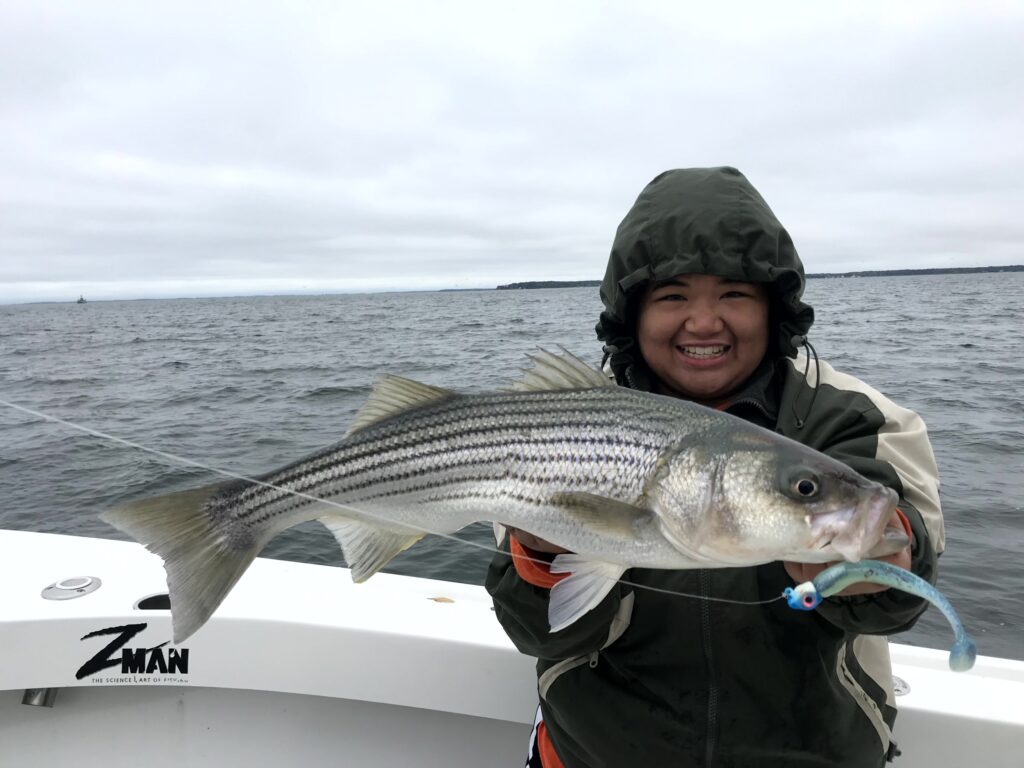The Twilight Rockfish Window

By Dennis Doyle
Launching my skiff late one afternoon, I was soon skimming down the Bay, heading for an area that had been hot a few days past. Nearing the location, I throttled back and raised my lower unit a few degrees for safety among the rocks and drifted toward the shoreline about 50 yards away. My four-stroke Yamaha made little noise as I got close but I knew I hadn’t been completely silent. Settling upcurrent, I shut off the motor and drifted.
I had four outfits rigged and ready to go and a routine planned. Fingering my casting rod, there was a three-quarter ounce Rat-L-Trap lipless plug in gold on 18 inches of 15-pound fluorocarbon leader tied on and ready. My Curado 700 casting reel was spooled with 200 yards of 15-pound braid. I had a light, lunch anchor ready and rigged and slipped it quietly down over the gunwale to hold me in place.
Drifting and fan casting may be a good way to find fish but my skiff was light; a shallow draft and a struggle with a good fish could pull me into the school and end up spooking the whole bunch.
Snugging the anchor line down, I paused to allow things to settle as my skiff swung to. Checking my watch, I waited a long five minutes before beginning to work the area. This is an important first element of my evening formula.
On my third cast, I came tight and a good fish put a great bend in my rod and ran hard against a lightly set drag. As it ran, I turned the star drag a bit tighter, then a hair looser, to give the rascal some room to show its stuff.
A fish fight is a wonderful way to enjoy the fall on the Bay and this year’s was beginning to prove surprisingly fruitful. The past few years, plagued by overharvesting, continuous recreational poaching, and overly optimistic estimates of rockfish populations by officials, a severe cut in sporting daily limits (50 percent) and a reduction in our seasons had been underway.
Although signs of early success may prove ephemeral, it looks as though our sacrifices may not be totally in vain. Early reports are suggesting that the fall bite is a great improvement—as long as you can find fish, of course.
With about a three-hour window, the main problem seems to be promptly locating the fish, then making every cast count. If the rascals don’t show up where you expect them, there is not much time to search them out.
As I netted a stocky linesides measuring in the high teens, I loosened the plug’s treble hooks and sent it back over the side. I planned to release any extra fish, although a 19- or 20-inch fish was enough for dinner. I didn’t want to ice the first one only to deep-hook a second that I didn’t intend to keep.
I had several good fish that afternoon on the gold Rat-L-Trap. I always start with that lure because I can throw it a long way, its noisy rattle attracts a lot of attention in depths up to 10 feet, and frankly, the lure is surprisingly productive. I have been relying on it now for over 20 years.
My established drill, if I get no action from the gold rattler, is to switch to a pearl-colored plug, then on to chartreuse. Failing to score, I then switch to a soft 5- or 6-inch plastic Bass Assassin or paddletail-type bait in varying retrieves and depths. Then, if I’m still failing or even if I’m successful, I approach the shoreline throwing topwater baits, my very favorite, until dark. After dark, I go back to throwing rattle plugs or soft plastics, or pack it up and head for home. One of these approaches usually gets some rockfish attention within that three-hour window of last light.
